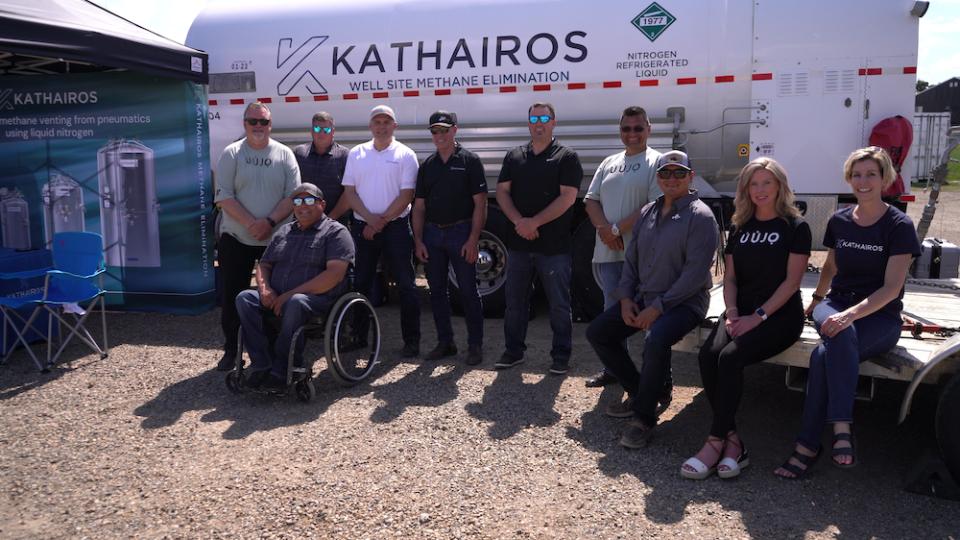Wayne Rothlisberger, a member of the Doig River First Nation in the heart of the massive Montney natural gas play, has spent three decades working in the energy sector.
He’s now vice-president of business development with ÚÚJǪ Developments LP, the business arm of the northern B.C. Nation, and it’s a busy job.
“ÚÚJǪ has seven equity partnerships in energy, aviation and banking, and we probably get two proposals a month given the interest in working in the Montney shale,” Rothlisberger says.
He was intrigued when he first learned about a new technology developed by Calgary-based Kathairos Solutions to reduce or eliminate methane emissions from oil and gas well sites.
“Energy companies operating in this region have come to realize the importance of working with First Nations and economic reconciliation,” he says.
“But Kathairos made sense on another level because they are providing an environmental solution that helps both locally and globally. And that’s something that we value, too.”
Oil and gas producers on both sides of the Montney play have made significant progress reducing methane emissions.
In Alberta, producers met the target of reducing methane emissions in the province by 45 per cent below 2014 levels three years ahead of schedule in 2022 — and surpassed it in 2023 with a 52 per cent reduction.
Meanwhile, in B.C., producers achieved a 51 per cent reduction over the same period.
But there is more work to do.
Kathairos’ technology uses liquid nitrogen as a replacement for the methane or natural gas normally used to power the pneumatic devices that serve as the nerve centre for oil and gas production wells.
Pneumatic devices regulate flows, separate liquids and perform other critical functions by making valves move.
Conventionally, every time a device is actuated, a small amount of methane is emitted into the atmosphere.
By replacing the methane or natural gas with nitrogen, when the valves powered by the pneumatics are actuated, an inert, clean gas is emitted.
The liquid nitrogen is stored in cryogenic tanks at the well site.
“Similar tanks have been safely and effectively used for decades in other industries, such as health care or beverages,” says Kathairos spokeswoman Jacqueline Peterson.
“But it was our company founder Dick Brown who saw the potential to apply them to well sites to solve the problem of venting methane.”
Peterson says the company has more than 2,400 units operating across North America, with 179 in Alberta and 36 in B.C.
Through three offset programs at 125 separate facilities, Kathairos has been independently verified to have mitigated more than 44,000 tonnes of CO2 equivalent.
The solution was impressive enough for ÚÚJǪ and Doig River to invest.
“We are a shareholder and ÚÚJǪ is self-funded so we need to invest wisely,” says Rothlisberger.
“There will be employment opportunities in the future as Kathairos establishes itself and scales up in Canada.”
Kathairos, which employs about 70 people with field offices throughout North America, welcomed the opportunity to partner with ÚÚJǪ and Doig River.
“We were looking for investors and engaging in the Indigenous communities whose traditional lands we were working on,” says Peterson, whose company has a similar agreement with the Halfway River First Nation.
“As we grow in the Montney region, we will further these relationships with employment opportunities and direct investment back in their communities.”
The unaltered reproduction of this content is free of charge with attribution to the Canadian Energy Centre.
